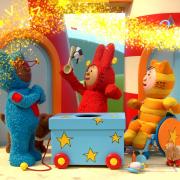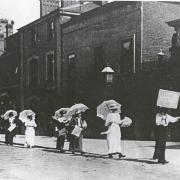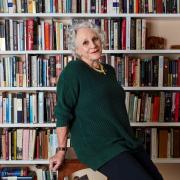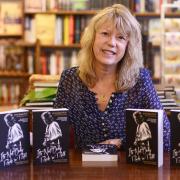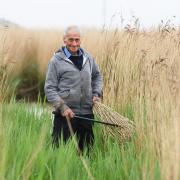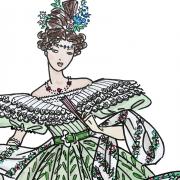It might not be hidden deep in the snow of the North Pole, but Norfolk has its own toy production line where a little bit of Christmas magic is being sprinkled

If you spend any time with young children, the chances are you will have played a round of two of Shopping List or giggled away as Greedy Gorilla devours some junk food.
But did you know that these fabulous fun games are dreamt up, designed and made in the heart of Norfolk – along with hundreds of other traditional toys meant to educate, engage and amuse little people?
The games and puzzles made at Orchard Toys at Wymondham are sold around the globe – and with the festive season in full swing, the production line is buzzing with activity and excitement, making the presents which will have little children beaming with delight come Christmas morning.
“Manufacturing happens all year round but from around April time we will start to stock-build for Christmas and then in October it really kicks in and everyone is working non-stop,” says marketing manager Ali Brown.

The ethos of Orchard Toys has always been learning made fun, and, says Ali, it remains at the core of their business.
“Every game needs a theme to capture children’s imaginations, good game play and clear objectives. It also teaches them about sharing, social interaction and following rules. What also makes our games so successful is that often they only take around 15 minutes to play – not only
great for little attention spans but easy to fit into busy days for mums and dads.”
Step one: Ideas

There are five illustrators, two graphic designers and a production manager who come together every week for a design meeting to discuss new ideas and on-going product development and designs.
“They get ideas from everywhere, things they see when they are out and about, or from children themselves, or perhaps inspiration from market trends – like dinosaurs at the moment,” says Ali. “One of our team always has a pen and paper by her bed as she always wakes up in the night with new ideas.”
Step two: Testing it
“Once we decide on a product, we start to develop the first prototype and then start testing them by going into nurseries and schools,” she says. “We might think it’s great, but it needs to be completely spot-on in terms of engaging the child and being age appropriate. The graphics and imagery might grab the attention of one age group, but we might find the game play is actually suitable for a different one. After testing it comes back to our team. Sometimes we have got it right first time, other times further development is needed.”

Step 3: Putting it together
When the game is deemed ready for market, the artwork goes off to be printed, the only part of the process done elsewhere. The designs arrive back as huge flat sheets. Then around 25 staff put the components together, building and packing the game boxes and making sure all the bits are there, ready to go.
Step 4: Distribution

Once ready they go to distribution ready to be packed and dispatched. “Our games and puzzles go all over the world but we also have lots of suppliers locally,” says Ali. “Online shopping has changed the entire retail landscape but we are still very supportive of our bricks and mortar stores who have been there for us since the start.”
The history of Orchard Toys
When Keith Harvey and his wife Margaret sat at their kitchen table almost 50 years ago sanding down hundreds of pieces of woods to create simple building block sets, they couldn’t have imagined it would be the start of what has become one of the leading educational toy companies in the country.
The couple, who then lived in Nottinghamshire, had transformed part of their house into a nursery called Orchard House and began thinking of ways to provide cheap but educational resources for the young children.
“Toys seemed so expensive, so we asked the carpenter who had done some building work for us whether he had any left over wood which he could cut into simple building block shapes. He agreed, and it seemed such a good idea we offered them for sale to parents who used the nursery,” says Keith. “We soon had 25 orders for the little boxes of bricks and promised delivery for Christmas. With a week or so to go, we took delivery of this huge pile of bricks, ready to package. What we didn’t realise was that none of them had been sanded.
“So Margaret and I sat around the table sanding bricks for what seemed like forever, desperately trying to get them all packed and out for Christmas. We laugh about it now! We made some simple red boxes, with a picture of our daughter Charlotte and one of her friends on the front, as well as a label – Orchard Toys – and that was our very first product.”
The carpenter provided more wood and they made some painting easels and a few Wendy houses, and the idea of creating a range of educational but fun toys was formed.
“One little boy in the school loved drawing but when his mum picked him up she would always say what a mess his drawings were. We tried to think of ways we could help him so I made a stencilling kit, creating simple shapes he could draw round to make a lorry. We gave it to him and he did a brilliant drawing. It was a great way for him to learn the skill of holding and using a pencil, while also giving him encouragement and confidence as he was achieving something.”
From this the couple began creating little tracing sets and gradually began to sell their fledgling range of products to local stores, while developing more products. By the early 1970s they had added simple colour matching and number games to their range – and then came the brand’s most popular game, even today – Shopping List. They moved their entire business to Wymondham in 2006 and it is now in the hands of their son-in-law and daughter, Hugh and Charlotte Beever.
“For us it has always been essential that our games have an educational element as well as being great fun,” says Keith. “It was key to our first product ideas nearly 50 years ago and it always will be.”
Facts and figures
• Orchard Toys manufactured over 2.7 million products in 2018 selling all over the world.
• Export currently represents 20% of its revenue with the main export markets being Australia and China, as well as 40 other countries world-wide.
• Among its most popular games are Shopping List, Match and Spell, Farmyard Heads and Tails, Smelly Wellies and Bus Stop.
• All Orchard Toys games, puzzles and packaging are manufactured in the UK and are made using 100% recycled board and paper from sustainable forests. They use as little plastic as possible.
• The site employs 60 staff, with around 50% working on production, warehousing and dispatch and 50% across design, sales, administration and operations.










